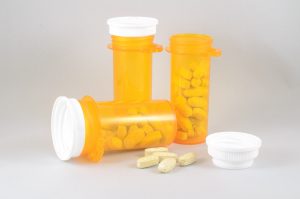
Year: 2019 and 2027
Market size: $98.58 billion and $188.79 billion, respectively
Today’s market size shows the total global revenues for pharmaceutical packaging in 2019 and projected for 2027 according to a report by Grand View Research. Demand for pharmaceutical packaging is expected to rise based on many factors: a growing pharmaceutical industry in China, India, and Brazil; rising demand for over-the-counter drugs; new drug discoveries; increased access to medicines as healthcare infrastructure improves in developing countries; an aging population; and a rise in the number of people with chronic diseases.
Growth is also expected as demand rises for more convenient packaging types, such as pre-filled syringes and autoinjectors, and for sustainable packaging made of biodegradable and recycled materials. The growing use of biologics to treat illnesses will increase demand for specialized packaging. Biologics are manufactured using animal, human, or plant cells which tend to be heat sensitive and prone to contamination.
Increasing regulations and anti-counterfeit measures such as the Drug Supply Chain Security Act in the United States and the European Union’s Falsified Medicine Derivative have increased packaging costs as new infrastructure has to be developed to meet the requirements outlined in the laws.1 As costs go up, more pharmaceutical companies are outsourcing their packaging needs. Pharmaceutical contract packaging revenues totaled $28.2 billion in 2019 or 28.6% of the overall global pharmaceutical packaging market. This is expected to increase to $47.7 billion in 2027. Many small pharmaceutical companies without packaging capabilities have maintained relationships with contract packaging organizations and contract development and manufacturing organizations all along.
Primary packaging, the packaging that comes in direct contact with the product itself, held the highest revenue share in 2019, 75.16%, with plastic bottles having the highest share within this category. Oral drug delivery packaging and injectable packaging together accounted for more than three-quarters of all pharmaceutical packaging revenue. By end-use, most revenues came from pharmaceutical manufacturers, then retail pharmacies, contract packaging, institutional pharmacies, and others.
North America had the highest revenue share in 2019, 37.8%. The United States is the largest pharmaceutical market worldwide. It has a large healthcare system, the population has high per capita income, and it invests heavily in new drug development. Also, many large pharmaceutical companies such as Pfizer Inc., Johnson & Johnson, Merck & Co. Inc., Bristol-Myers Squibb Company, and AbbVie Inc. are located there. The Asia-Pacific region is expected to see the highest compound annual growth rate through 2027 with China, India, Japan, and South Korea being the largest markets. Economic growth along with population growth and increasing drug safety regulations are expected to increase product demand. While the global market is fragmented with several regional and local pharmaceutical packaging companies, some major companies in this industry include Amcor PLC; Gerresheimer AG; AptarGroup Inc.; Becton, Dickinson and Company; Schott AG; West Pharmaceutical Services Inc., Berry Global Inc.; WestRock Company; International Paper Company; Comar LLC; CCL Industries Inc.; and Vetter Pharma International.
1 Some product tracing and product identification regulations under the Drug Supply Chain Security Act were waived for certain COVID-19 medications. Source: “FDA Lifts Drug Supply Chain Security Requirements for COVID-19 Products,” Regulatory Focus, Regulatory Affairs Professionals Society, April 30, 2020 available online here.Sources: “Pharmaceutical Packaging Market Size, Share & Trends Analysis Report by Material (Plastics & Polymers, Paper & Paperboard, Glass), by Product, by End Use, and Segment Forecasts, 2020 – 2027,” Grand View Research Report Summary, February 2020 available online here; “Pharmaceutical Packaging Market Size Worth $188.79 Billion by 2027: Grand View Research, Inc.,” CISION PR Newswire, February 11, 2020 available online here; “Pharmaceutical Contract Packaging Market Size, Share & Trends Analysis Report by Type (Primary, Secondary, Tertiary), by Material (Plastic & Polymer, Glass), by Region, and Segment Forecasts, 2020 – 2027,” Grand View Research Report Summary, August 2020 available online here; “Pharmaceutical Contract Packaging Market Size Worth $47.7 Billion by 2027: Grand View Research, Inc.,” CISION PR Newswire, August 26, 2020 available online here; “Pharmaceutical Packaging Market to Hit USD 142.59 Bn by 2027; Rising Demand for Efficient Packaging of Drugs by Healthcare Facilities to Boost Market Growth: Fortune Business Insights,” CISION PR Newswire, June 2020 available online here; “Pharmaceutical Packaging Market Size, Share & Industry Analysis, by Material (Plastics, Glass, Metal, Paper & Paperboard), by Product (Plastic Bottles, Caps & Closures, Pre-Fillable Inhalers, Vials & Ampoules), by Packaging Type (Primary, Secondary, and Tertiary), by Drug Delivery Mode (Oral Drug Delivery Packaging, Injectable Packaging, Topical Drug Delivery Packaging, Pulmonary Drug Delivery Packaging), and Regional Forecast, 2020-2027,” Fortune Business Insights Report Summary, June 2020 available online here; “Drug Supply Chain Security Act (DSCSA),” U.S. Food and Drug Administration, May 8, 2020 available online here; “Falsified Medicines,” Medicinal Products, European Commission, June 30, 2017 available online here; Michael Mezher, “FDA Lifts Drug Supply Chain Security Requirements for COVID-19 Products,” Regulatory Focus, Regulatory Affairs Professionals Society, April 30, 2020 available online here.
Image source: Bob Williams, “medicine-bottle-medical-health-2520463,” Pixabay, July 19, 2017 available online here.
